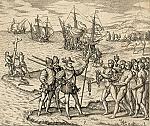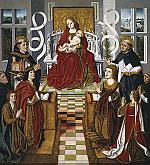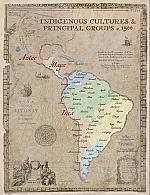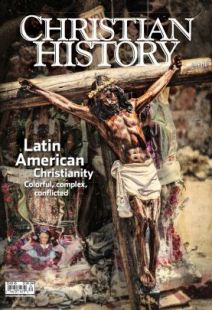Editor's note: Latin American Christianity
THE STORY WE BRING YOU in this issue of Christian History is a story that has proved hard to tell.
For years we have longed to do an issue on Christianity in Latin America. As this narrative ranges over more than 500 years and more than 20 different countries, we soon realized one full issue simply won’t be enough to tell it all—but we’re beginning here. We’ll return to the story in future issues and “zoom in” on some parts of the narrative we give you here from a “zoomed-out” perspective—missionary stories, the explosive growth of Pentecostalism, and more.
Troubling cases
From the whirlwind tour in this issue, I’ve learned many new tales of faithful leaders, mystics, and preachers, and I’ve placed into a new context names that I’d heard before—from Juan Diego to Bartolomé de las Casas to Gustavo Gutiérrez to Pope Francis. But one thing I have encountered as we’ve prepared these articles and images for you is that, while there are many bright spots and instances of beautiful faith in this narrative, there are also troubling cases of cruelty, misunderstanding, and sin. Not all were perpetuated by those who claimed to be Christian, but many were.
For example: the earliest European conquistadors in Latin America rightly argued against human sacrifice and other dubious practices that formed a part of indigenous religions, but they continued the already established practice of slavery. Indigenous peoples remained enslaved until 1542, and captured Africans were enslaved and brought to Latin America until the nineteenth century, sometimes with the justification that this enslavement brought them the opportunity to hear the gospel.
I was also struck by how in so many different stories—whether of the earliest Catholic missionaries, the Latin American republics’ struggles for independence, the spread of Pentecostalism, or the growth of liberation theology—the desires, faith, and practices of elite colonizers, politicians, and church bureaucrats opposed those of the poor, enslaved, and oppressed. In the essay “The Two Faces of Hispanic Christianity” from the Judson Bulletin, Dr. Justo González, one of our issue advisors, explains this struggle:
Few North Americans are aware of the degree to which the Catholic Church in Latin America was an arm of the powers of conquest, colonialism and oppression. Even fewer are aware of the other reality . . . which repeatedly decried and opposed those powers.
Faith or culture?
Debates arose over how many of the region’s indigenous traditions should be preserved, but all too often it seems that many of those struggles centered on politics and power, or confused orthodox faith with European culture. So not all of this is easy reading.
As in previous Christian History issues on difficult topics such as the Crusades, US slavery, or collaboration with the Nazi movement, these stories ask us to think long and hard about where faith ends and culture begins. They remind us that Christians sometimes make terrible mistakes. They challenge us to learn so that we don’t repeat those same mistakes. And they ask us to keep our focus on God’s faithfulness and not on the lures of human or demonic power—as we learn from those in this story who truly served Jesus, blessed the poor, and spread the gospel. CH
Jennifer Woodruff Tait
Managing editor
By Jennifer Woodruff Tait
[Christian History originally published this article in Christian History Issue #130 in 2019]
Next articles
Map: Indigenous cultures & principal groups, c. 1500
Map of indiginous groups when Europeans arrived in the new world
the editorsSupport us
Christian History Institute (CHI) is a non-profit Pennsylvania corporation founded in 1982. Your donations support the continuation of this ministry
Donate







